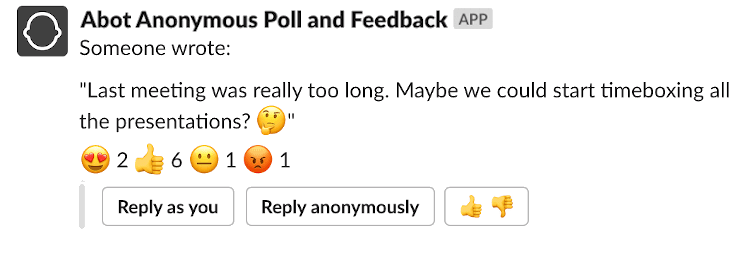
PostgreSQL database queries are a common performance bottleneck for web apps. Before you resort to more complex optimization techniques like caching or read replicas, you should double-check if your database engine does not need tuning and queries are not underperforming.
PG Extras is a tool that allows you to spot common PostgreSQL pitfalls. Ruby, Rails, Rust, Elixir, NodeJS, Python and Haskell implementations are currently available.
In this blog post, I present a step by step guide on using PG Extras library to spot and resolve common PostgreSQL database performance issues.
How to start using PG Extras
Please refer to READMEs of respective implementations for installation details. API is almost identical for all the versions. Let’s compare the invocation of the cache_hit method:
RubyPgExtras.cache_hit # RubyEctoPSQLExtras.cache_hit(YourApp.Repo) # ElixirPostgresExtras.cache_hit() // NodeJSPGExtras.query('cache_hit') # PythonextrasCacheHit databaseUrl -- HaskellIn this blog post, I’ll be using examples from the Ruby version.
Enable pg_stat_statements extension
Some of the PG Extras methods depend on the pg_stat_statements extension. If you are using a default Heroku PostgreSQL plugin or AWS RDS, you should be good to go without making any changes.
To check if the extension is already enabled you can use PG Extras itself:
RubyPgExtras.extensions
...
| pg_stat_statements | 1.7 | 1.7 | track execution statistics of all SQL statements executed
...If pg_stat_statements is not listed you should check out these docs for info on installing it.
If the extension is available but not enabled you have to run this SQL command in your database:
CREATE EXTENSION IF NOT EXISTS pg_stat_statements;Now that you’ve set up the library in the language of your choice let’s start checking our database’s health.
[Important] Make certain to run all the checks on a warmed up production database. Under the hood, PG Extras performs a lightweight queries on PostgreSQL metadata tables. It will not impact your production workload.
1) Validate your database specs with cache hit ratios
In theory, the simplest solution to optimize the underperforming database is to scale it up vertically. Before you start throwing money at your performance issues, it’s good to check if it will actually help.
PostgreSQL tracks access patterns of your data and keeps frequently read chunks in a memory cache. A reliable indicator that a database should be scaled up is an invalid cache hit ratio.
You can check index and table cache hit ratios using the following code:
RubyPgExtras.cache_hit
name | ratio
----------------+------------------------
index hit rate | 0.999577
table hit rate | 0.988721If you want to drill down into each individual’s table and index cache hit ratios, you can use table_cache_hit and index_cache_hit methods. The rule of the thumb is that values should be above 99%. If your database cache hit ratios are lower, it’s either not correctly configured or should be scaled up to increase the performance.
On Heroku you can double-check if the memory is missing by running the following command:
heroku logs -t | grep heroku-postgresAfter a few moments, you should see the PostgreSQL plugin logs output. You have to look for the following entries:
sample#memory-total=62560050kB sample#memory-free=11327524kBI usually try to keep around ~30% of total memory free. Unfortunately, on Heroku, you’d have to write a custom script to monitor this metric and alert you when the numbers are off. On the contrary, AWS RDS comes with full-blown CloudWatch support. You can easily configure alerts if memory usage is not correct. That’s just one of the reasons why you might want to consider migrating your PostgreSQL from Heroku to RDS. Check out this blog post for more details.
As for the PG settings, Heroku PostgreSQL ships with already optimized values and does not allow you to change them. Amazon RDS is known for shipping database instances with incorrect default settings. If you’re using it, make sure to tweak them before deciding to scale up the instance. PGTune is the best tool to help you tweak the most important Postgres buttons and dials to the correct values.
You can use db_settings method to check current values of PGTune related settings:
RubyPgExtras.db_settings
| name | setting | unit |
+------------------------------+---------+------+
| checkpoint_completion_target | 0.7 | |
| default_statistics_target | 100 | |
| effective_cache_size | 1350000 | 8kB |
| effective_io_concurrency | 1 | |
| maintenance_work_mem | 1740800 | kB |
| max_connections | 500 | |
| max_wal_size | 2048 | MB |
| min_wal_size | 80 | MB |
| random_page_cost | 2 | |
| shared_buffers | 374912 | 8kB |
| wal_buffers | 2048 | 8kB |
| work_mem | 102400 | kB |
+------------------------------+---------+------+2) Remove unused indexes
Overusing indexes is a recipe for a sluggish web app.
The more indexes you add, the more write operations have to be performed on each data update. Misconfigured indexes also tend to unecessarily bloat the size of a database, slowing down the backup/restore/upgrade operations.
It’s entirely possible that some of your indexes and not used and can be safely removed.
PG Extras unused_indexes method can help you spot them:
RubyPgExtras.unused_indexes
table | index | index_size | index_scans
---------------------+--------------------------------------------+------------+-------------
public.grade_levels | index_placement_attempts_on_grade_level_id | 97 MB | 0
public.observations | observations_attrs_grade_resources | 33 MB | 0
public.messages | user_resource_id_idx | 12 MB | 0Few index_scans on an index that has been around for a while means that you should probably remove it. One catch here is indexes on smaller tables. A PostgreSQL query planner might not use them because so-called sequential scan is more efficient for small collections. You can check out my other blog post about using EXPLAIN ANALYZE to debug PostgreSQL indexes. It describes practical tips e.g, how to force query planner to use an index even for a small development dataset.
If the index is large, remember to use the CONCURRENTLY option when dropping it, to avoid exclusively blocking the whole related table.
index_size method can give you a quick overview of how much space your database indexes are taking:
RubyPgExtras.index_size
name | size
-----------------------------------------------
index_a_name | 5196 MB
index_b_name | 4045 MB
index_b_name | 2611 MB3) Optimize "NULL" indexes
By “NULL” indexes, I mean ones that contain a high ratio of NULL values.
In some cases (e.g., indexing foreign keys of an optional relation), NULL values unnecessarily bloat the index size and slow down insert operations on a related table. You can use the null_indexes method to list indexes that contain NULL values:
RubyPgExtras.null_indexes
index | index_size | unique | indexed_column | null_frac | expected_saving
---------------------+------------+--------+----------------+-----------+-----------------
users_reset_token_ix | 1445 MB | t | reset_token | 97.00% | 1401 MB
plan_cancelled_at_ix | 539 MB | f | cancelled_at | 8.30% | 44 MB
users_email_ix | 18 MB | t | email | 28.67% | 5160 kBIn this example, the users_reset_token_ix index consists primarily of NULLs. Replacing it with a partial one that excludes NULL values will save over 1GB of disk space. You can do it by running the following SQL:
DROP INDEX CONCURRENTLY users_reset_token_ix;
CREATE INDEX CONCURRENTLY users_reset_token_ix ON users(reset_token)
WHERE reset_token IS NOT NULL;Make sure to check if you’re not querying by NULL values before applying this change.
You can read this blog post for more in-depth info about this technique.
4) Add missing indexes
Now that we’ve removed unused and “NULL” indexes, let’s add some new ones. We don’t want them to share the fate of their recently deprovisioned cousins. Let’s look at PG Extras seq_scans and calls methods before deciding on what should be indexed.
A sequential scan is an action that Postgres performs if it cannot find an index necessary to fulfill the query condition. For the following query:
SELECT * FROM USERS WHERE AGE = 18;the related EXPLAIN ANALYZE query output will show Seq scan on users Filter: AGE = 18 or Index Scan using users_age_index Index Cond: AGE = 18 depending on whether the index on age column is present or not.
seq_scans method displays the number of Seq Scan operations for each table:
RubyPgExtras.seq_scans
name | count
-----------------------------------+----------
learning_coaches | 44820063
states | 36794975
grade_levels | 13972293
charities_customers | 8615277Now that we know which tables are often read inefficiently, we can use calls and outliers methods to list the most often executed and most time-consuming queries.
Both of those methods let you extract the raw query string. You can use it to perform EXPLAIN ANALYZE and check if the query planner does Seq scan on one of the tables.
By correlating all those sources of data, you should be able to spot queries that are consuming a lot of your database resources and are potentially missing an index.
Watch out to avoid premature optimization by adding unnecessary indexes. PostgreSQL will often fallback to Seq Scan instead of Index Scan on small tables, for which using the index would be less efficient than reading the whole table row by row.
5) Identify deadlocks
PostgreSQL uses locks to ensure data consistency in multithreaded environments. There are different kinds of locks, but we’ll focus on ExclusiveLock and RowExclusiveLock. A healthy web app should never lock for more than a couple of hundred of miliseconds.
Deadlock is two more or database locks blocking each other and not able to continue execution. An implementation error that results in a deadlock might have disastrous consequences for your application. The queue of requests not able to proceed could start piling up and eventually crash your servers.
Common reasons for deadlocks and locks that are granted for too long:
- too broad database transaction scope
- adding or removing index without using the
CONCURRENTLYoption - updating lots of rows at once
- adding a new column with the default value (before PostgreSQL 12)
How to detect locks and deadlocks
You can use locks method to see all the currently obtained locks together with the source query:
RubyPgExtras.locks
procpid | relname | transactionid | granted | query_snippet | mode | age
---------+---------+---------------+---------+-----------------------+-------------------------------------
31776 | | | t | <IDLE> in transaction | ExclusiveLock | 00:19:29.837898
31776 | | 1294 | t | <IDLE> in transaction | RowExclusiveLock | 00:19:29.837898
31912 | | | t | select * from hello; | ExclusiveLock | 00:19:17.94259
3443 | | | t | +| ExclusiveLock | 00:00:00The mere presence of locks does not mean that something is wrong with your database. Only locks that are granted for too long are potentially problematic. You can use the following Ruby snippet integrated into the background job to alert you if this happens:
TRESHOLD_SECONDS = 1
long_locks = RubyPgExtras.locks(in_format: :hash).select do |lock|
Time.parse(lock.fetch("age")).seconds_since_midnight > TRESHOLD_SECONDS
end
raise "Long running locks: #{long_locks}" if long_locks.present?If you notice extended locks, you can use the blocking method to check which SQL statements cannot continue execution because of a lock:
RubyPgExtras.blocking
blocked_pid | blocking_statement | blocking_duration | blocking_pid | blocked_statement | blocked_duration
-------------+--------------------------+-------------------+--------------+------------------------------------------------------------------------------------+------------------
461 | select count(*) from app | 00:00:03.838314 | 15682 | UPDATE "app" SET "updated_at" = '2013-03-04 15:07:04.746688' WHERE "id" = 12823149 | 00:00:03.821826If your app is crashing because of deadlocks, you can use the kill_all to terminate all the database processes before you manage to resolve the underlying cause.
6) Get rid of unnecessary bloat
The way PostgreSQL works is that it never updates or removes the data in place but instead marks each row as visible or not for transactions using two meta columns xmin and xmax. Rows no longer visible for any of the currently active transactions are called dead rows or bloat.
Dead rows are regularly garbage collected by a process called AUTOVACUUM, and space they previously occupied can be reclaimed for new data. If autovacuuming is misconfigured, it might result in your table consisting of mostly dead rows that are blocking the disk space and slowing down queries.
To check if some of your tables are overly bloated, you can use the bloat method:
RubyPgExtras.bloat
type | schemaname | object_name | bloat | waste
-------+------------+-------------------------------+-------+----------
table | public | bloated_table | 8.1 | 98 MB
table | public | other_bloated_table | 1.1 | 58 MB
table | public | clean_table | 0.2 | 3808 kB
table | public | other_clean_table | 0.3 | 1576 kBIf bloat ratio (i.e. size of bloat related to the size of the whole table) is close to the value of 10 you should have a closer look at your vacuum settings. vacuum_stats method can help you with that:
RubyPgExtras.vacuum_stats
schema | table | last_vacuum | last_autovacuum | rowcount | dead_rowcount | autovacuum_threshold | expect_autovacuum
--------+-----------------------+-------------+------------------+----------------+----------------+----------------------+-------------------
public | bloated_table | | 2020-04-26 17:37 | 100 | 810 | 3000 |
public | other_bloated_table | | 2020-04-26 13:09 | 79 | 98 | 166 |
public | clean_table | | 2020-04-26 11:41 | 41 | 11 | 58 |
public | other_clean_table | | 2020-04-26 17:39 | 12 | 4 | 52 |On frequently updated tables the bloat could be significant but autovacumming should be getting rid of it on a regular basis.
If you see that your bloated table has not been autovacuumed for a while and autovacuum is not expected, it means that something might be misconfigured in your autovacuum settings. You should check the PostgreSQL docs on automatic vacuuming for more info on config settings that could cause that.
To VACUUM FULL or not
If your table has bloat, although vacuum_stats indicate that it has recently been vacuumed, it means that table has a lot of free disk space that has been previously restored from the vacuumed rows.
It is not necessarily a bad thing. PostgreSQL will reuse that disk space for new data. If you’d like to reclaim this space for the operating system, you need to perform the VACUUM FULL. Contrary to VACUUM the VACUUM FULL grants an exclusive table lock, so doing it on a live production database could cause a disaster.
To perform VACUUM FULL without locking the underlying table, you could use pg_repack.
Generally, it is not recommended to run VACUUM FULL on a regular basis. You should consider it only in some cases, i.e., you’ve removed most of the data from a huge table.
7) Remove unneeded objects
It might seem like obvious advice, but I have a feeling that it is often getting overlooked. Do you really need to keep all the data of a user who signed up two years ago and has not visited ever since? Regularly purging unnecessary data will keep both your database and GDPR inspectors happy.
table_size method can help you get a quick overview of how big your tables actually are:
RubyPgExtras.table_size
name | size
---------------------------------------+
learning_coaches | 196 MB
states | 145 MB
grade_levels | 111 MB
charities_customers | 73 MB
charities | 66 MBE.g., in my project Abot I regularly remove all the data of teams who deactivated the Slack integration. This is both performance and GDPR friendly practice.
Diagnose your database
I understand that manually checking all those stats can be a tedious and repetitive task. Ruby PGExtras now features a diagnose method that generates a report highlighting potential issues in your database.

Later you can use table_info and index_info methods to overview different metadata metrics. These methods aggregate data provided by other methods in an easy to analyze summary format.
RubyPgExtras.table_info(args: { table_name: "users" })
| Table name | Table size | Table cache hit | Indexes cache hit | Estimated rows | Sequential scans | Indexes scans |
+------------+------------+-------------------+--------------------+----------------+------------------+---------------+
| users | 2432 kB | 0.999966685701511 | 0.9988780464661853 | 16650 | 2128 | 512496 |RubyPgExtras.index_info(args: { table_name: "users" })
| Index name | Table name | Columns | Index size | Index scans | Null frac |
+-------------------------------+------------+----------------+------------+-------------+-----------+
| users_pkey | users | id | 1152 kB | 163007 | 0.00% |
| index_users_on_slack_id | users | slack_id | 1080 kB | 258870 | 0.00% |
| index_users_on_team_id | users | team_id | 816 kB | 70962 | 0.00% |
| index_users_on_uuid | users | uuid | 1032 kB | 0 | 0.00% |
| index_users_on_block_uuid | users | block_uuid | 776 kB | 19502 | 100.00% |
| index_users_on_api_auth_token | users | api_auth_token | 1744 kB | 156 | 0.00% |This info by itself is usually enough to localize the cause of a problem. But, other lower-level API calls allow you to dive into more details if necessary.
Summary
This checklist should help you keep your Postgres databases running at their best possible performance. PostgreSQL offers powerful insights into what’s going on inside the engine. But, information is scattered across several and sometimes obscure meta tables. PGExtras library is my take on making it more accessible for devs that don’t specialize in databases. I hope you’ll find it useful for debugging your project.


